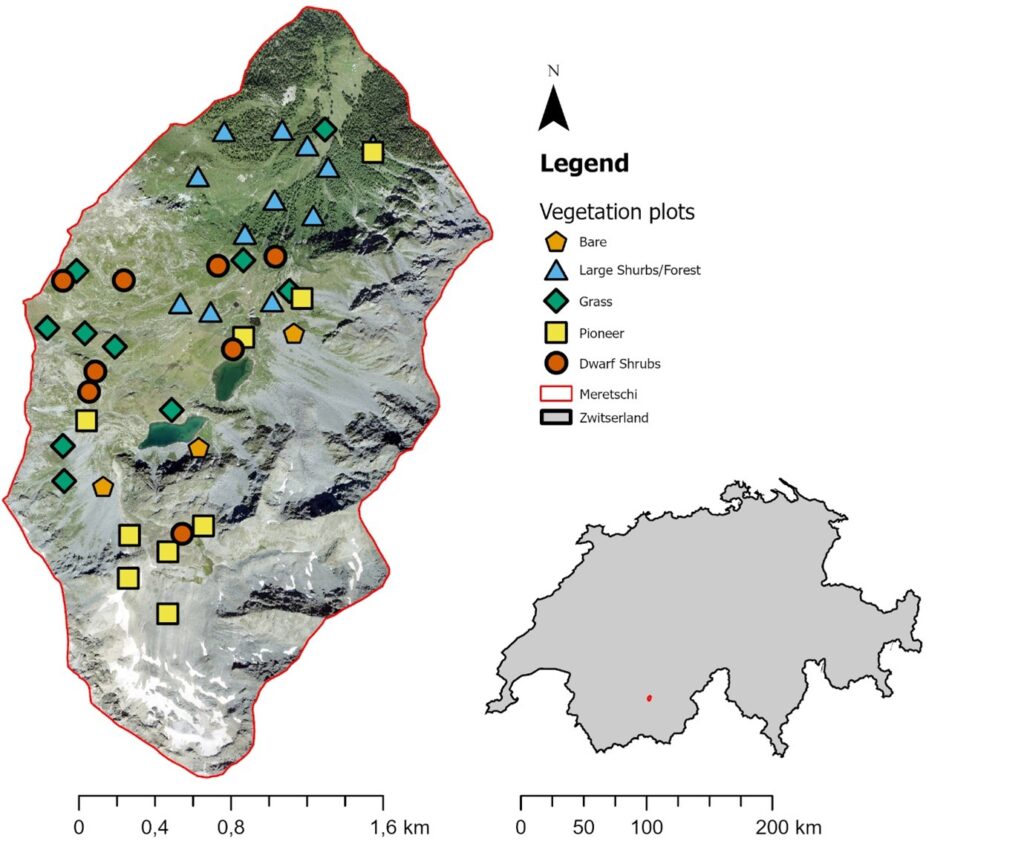Climate change is causing severe impacts in mountainous regions, leading to “greening” as vegetation densifies and shifts upslope as a response to rising temperatures. This vegetation change affects the hydrological cycle, influencing aspects like infiltration, retention, and evapotranspiration, which in turn alters water availability in both mountain catchments and downstream areas. As snow and ice storage decrease, understanding these hydrological effects becomes increasingly important for human water security.
While vegetation has long been recognised as a key component of the water balance, our understanding of how, when, and where vegetation dynamics drive hydrological changes remains limited, particularly in alpine environments.
Objectives
- Characterize mountain greening dynamics and dominant processes in alpine catchments.
- Link vegetation traits and functional types to hydrological processes.
- Quantify hydrological impacts of different greening mechanisms at the plot and catchment scale.
Approach
GRAIT will use a combination of field observations, remote sensing, controlled experiments and mechanistic modelling (Tethys- Chloris) to better understand mountain greening in a changing climate. The focus of our research will be the Meretschi catchment in Switzerland. Our findings will contribute to a broader understanding of how mountain greening will contribute to a shift in water balance in a changing climate.

